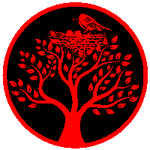Hi David,
it's difficult to make a more precise attribution than just nanban style. The two persons carved in your tsuba look perfectly nanbanjin (南蛮人) i.e. Portuguese merchants, so one could speculate about a pre-Momoyama tsuba. Anyway most people think of nanban tsuba as late Edo production (this point is still unclear for me... as many others, indeed).
Bye, Mauro


